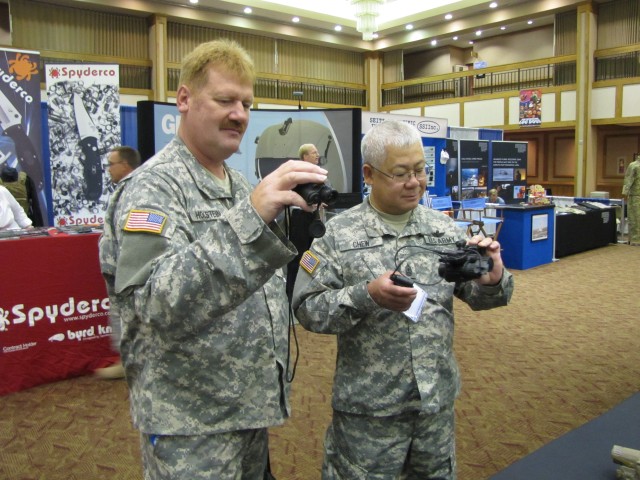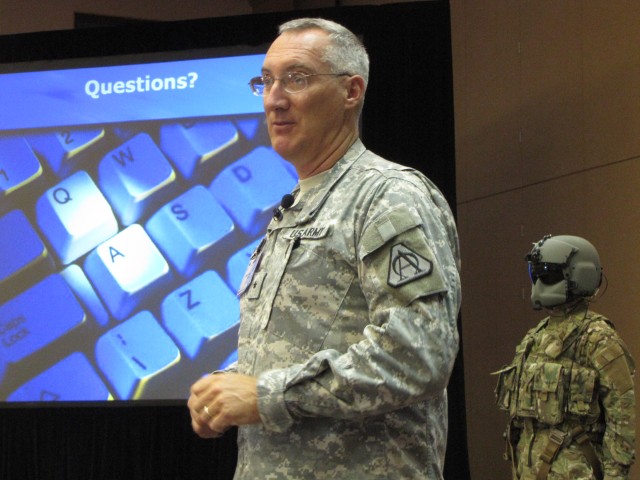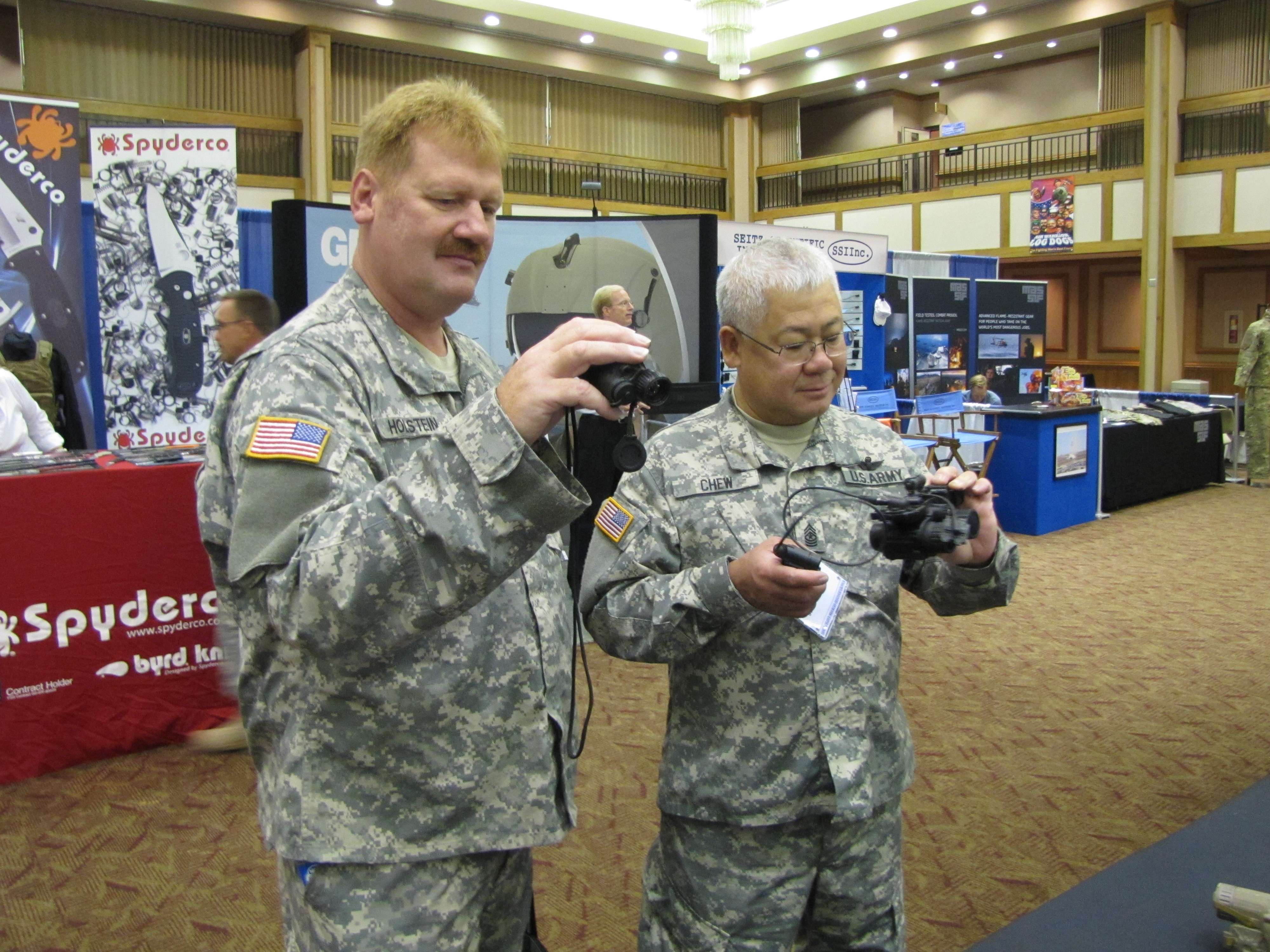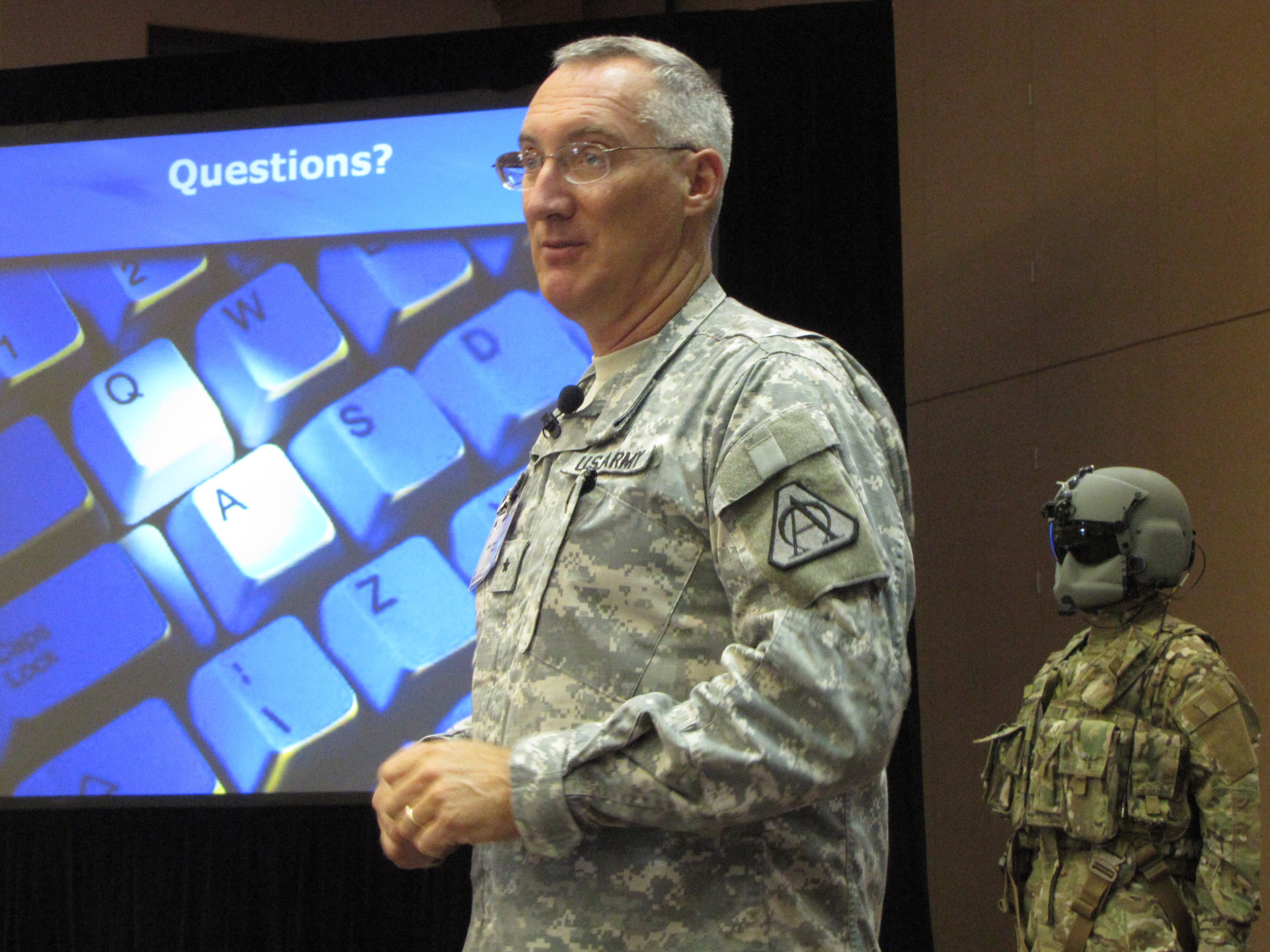REDSTONE ARSENAL -- System engineering is the next great frontier for those Army Soldiers and civilians responsible for equipping today's Soldier.
With a list of 15 million pieces of equipment used by today's Soldiers, making sure they have the right equipment at the right time can become a weighty matter.
And it's exactly that weight that Brig. Gen. Peter Fuller, program executive officer for Soldier, is concerned about as equipment is added to a Soldier's battlefield uniform.
"We're fielding a lot of equipment to Soldiers all over the world so that every Soldier in the Army is most lethal, operational and survivable in every situation in the field," Fuller said.
"But we keep on layering more things on Soldiers. We don't think through system engineering and we need to so the Soldier doesn't have to do that in the field."
Fuller spoke specifically about the challenges of the aviation pilot's equipment during the Aviation Life Support Equipment users conference at the Von Braun Center on Aug. 24. He has made it a point to fly in each aircraft to experience how an aviator uses his equipment and how that equipment can get in the way of the mission.
"We are providing everything you have to operate and maintain your platform," Fuller said. "The Soldier is the centerpiece. We need to build the platform for the Soldier, not the Soldier for the platform."
Equipment bulk, communication cables and noise issues related to the helmet are all of concern when equipping the aviator for the mission.
"The bulk makes it difficult to get in and out of a helicopter. And, when you are getting out, if you forget your helmet is plugged in your head will get snapped," Fuller said. "We are providing you with a lot of capabilities. But you've got to take a knee because you have a lot of stuff to carry ... How do we ensure that these kids don't get overloaded'"
Soldier modernization efforts involve ensuring lethality, survivability and operational ability of Soldiers.
"From 2001 to 2010 our Soldier capabilities have expanded amazingly," Fuller said.
"But we have found that when we do lighten the load or reduce items, Soldiers fill that with extra ammo. We are constantly learning what is going on in the field and what our challenges are in the field. We need your feedback. We need lessons learned."
It costs about $18,000 to provide a Soldier with the basic kit for a deployment. When it comes to an aviator Soldier, the equipment kit is designed to ensure better interface with the aircraft and to ensure safety. Fuller urged aviators in his audience to use their equipment, especially their helmet.
"We are concerned about long-term impacts," he said. "You have great hearing protection and great capability in the helmet. You are working in a high noise environment that can have a long-term impact on your hearing and be a huge financial burden on the country if you don't wear your helmet.
"The infantry, armor, field artillery and aviators - they all have hearing issues. We are trying to give you the ability to hear while wearing heavy protection and a helmet."
When improving and developing new equipment systems for Soldiers, PEO-Soldier works to reduce bulk and weight; integrate and optimize the full suite of equipment to improve mission effectiveness, safety, survivability and situational awareness; increase the ability to effectively operate in extreme conditions and temperatures; and improve ability to operate in degraded visual environments.




Social Sharing